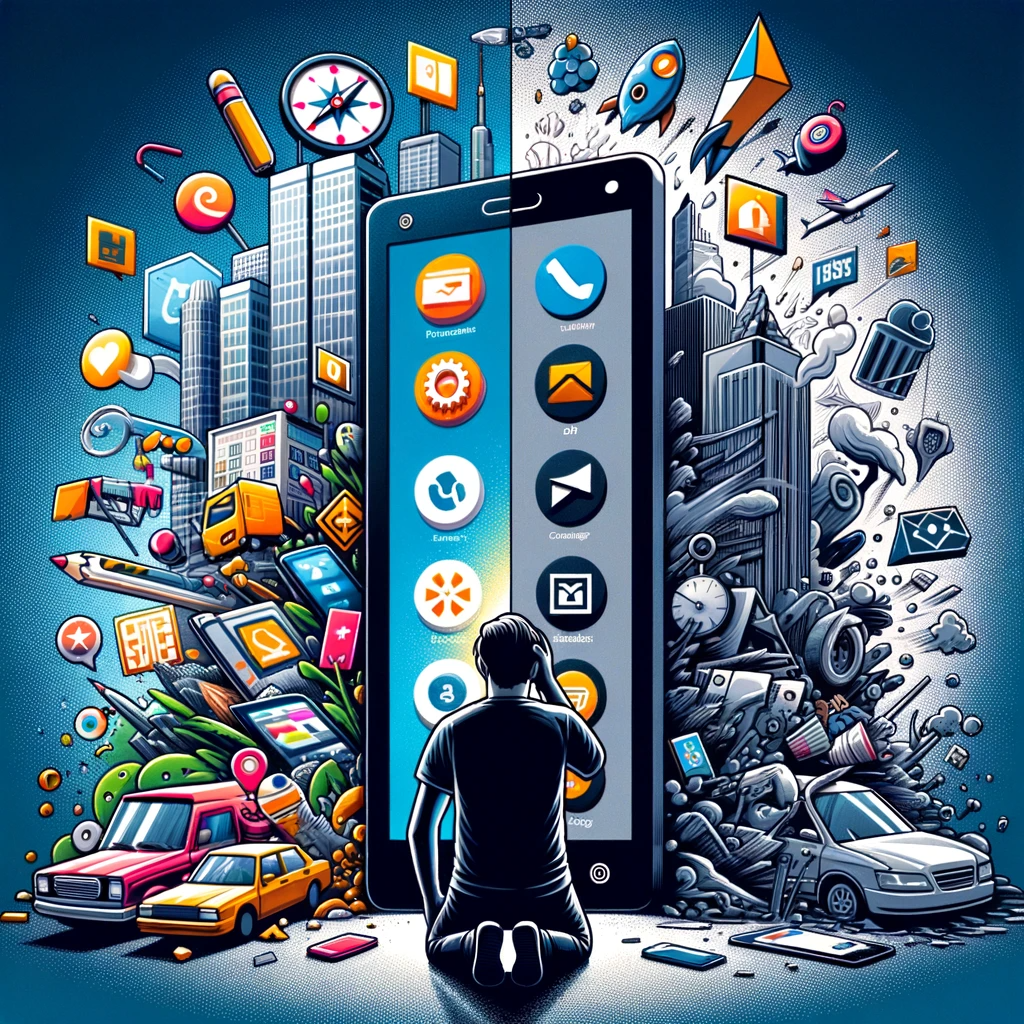In the whirlwind realm of user experience, it seems we’ve veered off the path, focusing on the bling rather than the bang. Gone are the days when UX meant creating intuitive, seamless experiences. Now, it’s all about which app can sport the snazziest 3D buildings or which game can boast the most intricate graphics—regardless of whether they crash your system or make your phone hotter than the summer sun in Death Valley.
Take, for example, the cartographic showdown between Google Maps and Apple Maps. Once hailed as the navigational North Stars, they now seem more interested in dressing up the interface with cool effects that, frankly, nobody asked for. Remember when finding the fastest route to your cousin’s wedding was all that mattered? Now, it’s about whether you can see the wedding venue in 3D, even if it means the app crashes mid-journey and you end up at a funeral instead.
And don’t get me started on the gaming industry. It’s as if the motto has become “Launch first, fix later…maybe.” Games are released into the wild, half-baked and glitchier than a bad internet connection. But then there’s Baldur’s Gate 3—a beacon of hope. They took their sweet time, listened to feedback, and launched a game so polished it practically gleams. The result? A masterpiece that reminds us what happens when you focus on quality over flashiness.
iOS, oh iOS, how the mighty have fallen. There was a time when buying an Apple product meant you were getting the crème de la crème of user experiences. Now, it’s like playing Russian roulette with your device’s functionality—will it or won’t it survive the next update?
So, what’s at the root of this decline? A collective magpie syndrome among product managers, it seems. Always chasing the next shiny object, losing sight of the real gold—the users. As a product manager myself, I get it. The allure of the new is seductive. But without discipline, we’re just leading our products down a path paved with pretty but pointless features.
How do we fix it? Simple, yet so often overlooked: Use your products like your users do. Walk a mile in their digital shoes. Impossible, you say? Poppycock! Get out there, simulate real user environments, employ tools that mirror the user journey, dive deep into analytics that trace their digital footsteps. It’s time to get off our high horses and start paying attention to the folks we’re supposed to serve.
The lesson here is as old as time but apparently needs repeating—technology should serve us, not enslave us. Let’s ditch the distractions, focus on solving real problems, and maybe, just maybe, we can steer the UX ship back on course.

